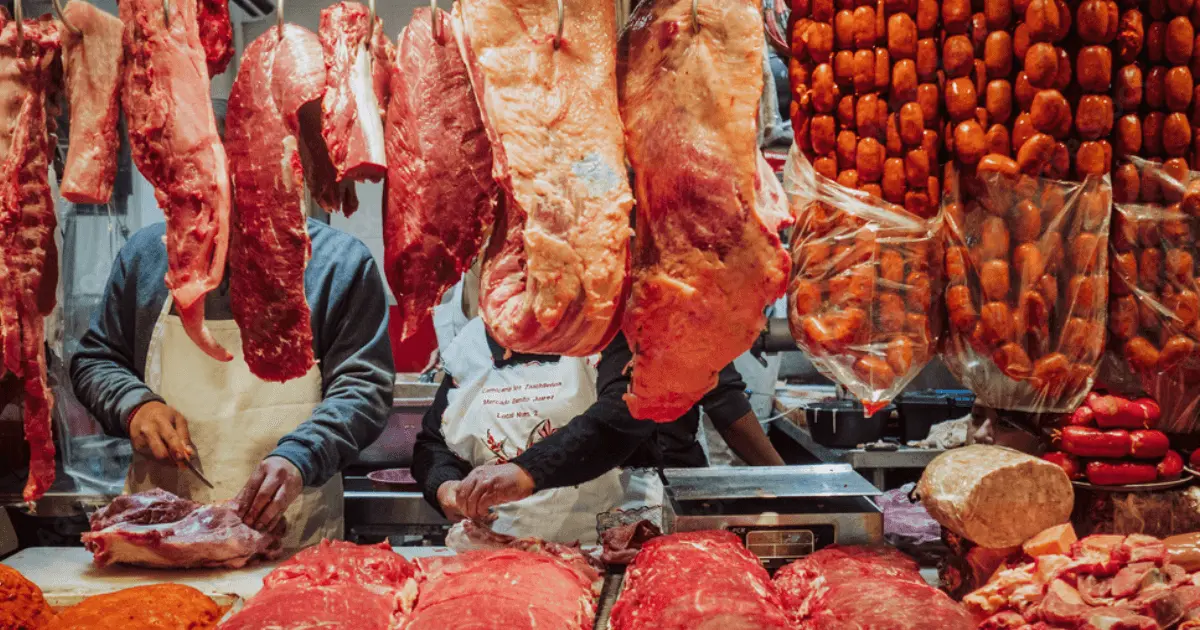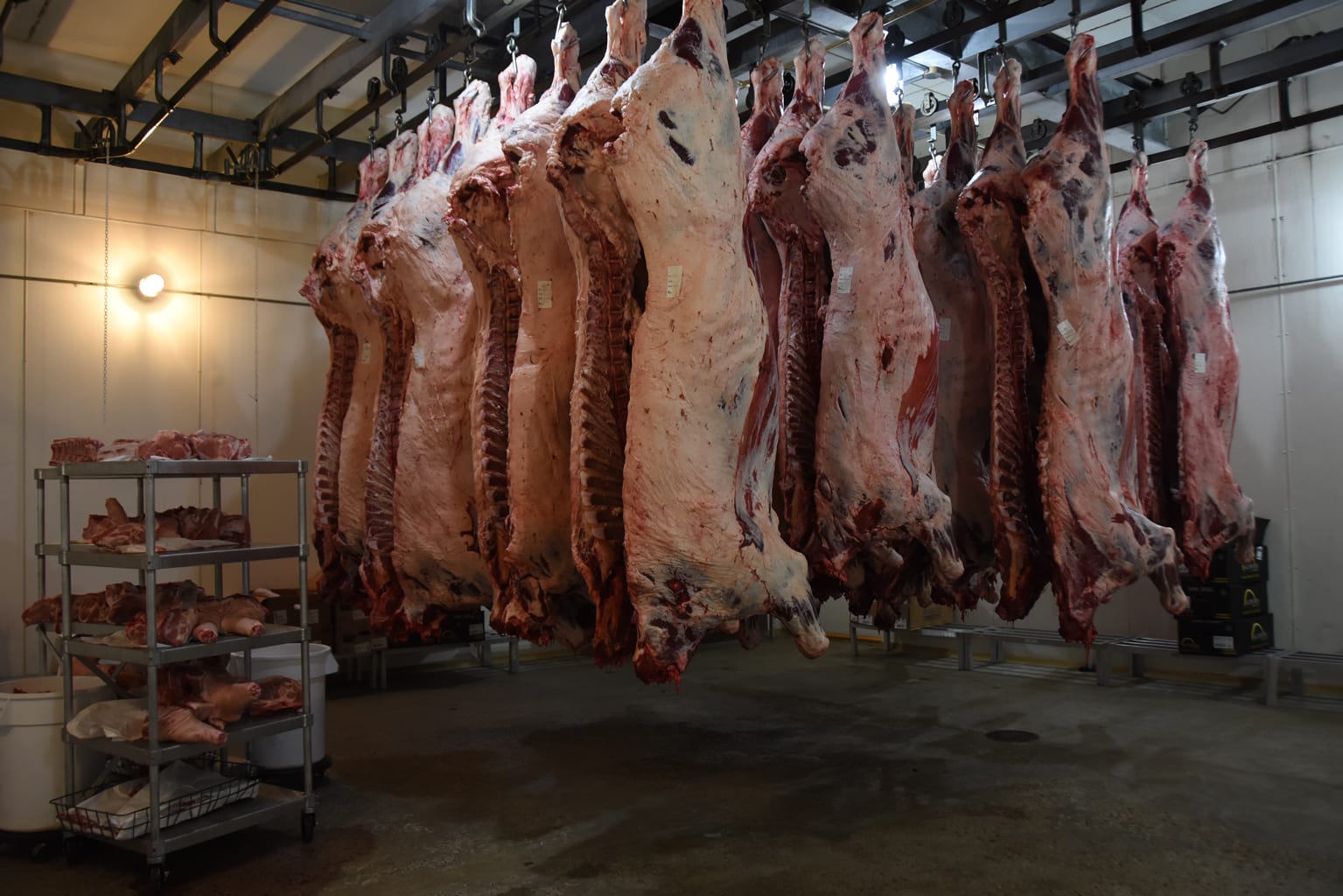Bagley Farms Meat Market Edwardsville IL: Your Go-To Destination for Local Meat Selection
Bagley Farms Meat Market Edwardsville IL: Your Go-To Destination for Local Meat Selection
Blog Article
Uncover the Art of the Butcher's Cut in a Modern Meat Market
In the ever-evolving landscape of modern meat markets, the butcher's cut has actually transcended its standard origins, merging age-old workmanship with modern methods. What really sets the modern-day butcher apart is their capacity to forge a deeper link in between customers and the beginnings of their meat.
Advancement of Butchery Strategies

The mid-20th century saw butchery techniques further improved by clinical insights into muscle biology and meat aging, enhancing both inflammation and preference. Advancements like vacuum packaging and refrigeration extended item shelf-life, enabling butchers to branch out offerings and improve quality assurance. This duration additionally noted the increase of specific devices, such as band saws and meat slicers, which boosted precision and effectiveness in meat processing.
Electronic systems currently help in monitoring animal provenance and optimizing cuts to fulfill particular consumer preferences. In addition, a renewal in artisanal butchery has actually arised, blending standard skills with modern-day understanding to cater to customers looking for honest and lasting meat choices.

Comprehending Meat Cuts

Recognizing the ins and outs of meat cuts is necessary for both butchers and customers seeking quality and value. Each cut originates from a various part of the animal, imparting distinct tastes, textures, and food preparation approaches. Proficiency of these differences not only boosts cooking experiences however also optimizes the utility of each carcass. For butchers, precise cuts mirror skill and respect for the craft, making certain marginal waste and ideal yield.
The main categories of meat cuts consist of primal, sub-primal, and retail cuts. Primal cuts, such as the loin, rib, and chuck, are the huge areas at first separated from the carcass. Butchers after that break these down further right into sub-primal cuts, before finally generating retail cuts readily available to consumers, like ribeye or tenderloin. Each stage calls for mindful interest to anatomical framework and muscle composition.
Understanding muscle make-up is essential; muscular tissues made use of a lot more frequently by the pet have a tendency to be tougher and are best matched for sluggish food preparation techniques, while less-used muscular tissues, like those found in the loin, are extra tender and suitable for grilling or roasting. Experience with these distinctions equips customers to make educated have a peek at these guys options, enhancing their cooking ventures.
Picking Quality Meat
Selecting the appropriate meat entails greater than just choosing an aesthetically enticing piece from the display screen. see here now The art of picking top quality meat requires a critical eye and expertise of specific qualities that indicate quality and quality. Firstly, pay focus to the shade; beef should have a bright, cherry-red shade, while lamb ought to exhibit a soft pink tone, and pork a pale pink. This shows the meat is fresh and hasn't been subjected to oxygen for too long.
Secondly, consider the marbling, which refers to the white streaks of fat within the muscular tissue. Correct marbling is a vital indicator of tenderness and taste, as it melts throughout cooking, boosting the meat's juiciness. Keep in mind, greater marbling commonly correlates with exceptional high quality cuts, such as USDA Prime.
Appearance is one more critical aspect; meat should really feel firm to the touch, not slimed or overly soft. Furthermore, be mindful of the fragrance. Fresh meat should have a clean, neutral scent, devoid of any kind of sour or off-putting smells.
Pairing Cuts With Food Preparation Methods
Successfully matching cuts of meat with the proper food preparation techniques is crucial for achieving optimal taste and appearance. These methods improve the meat's natural flavors and guarantee a juicy surface.
Alternatively, tougher cuts like brisket and chuck roast are rich in collagen, which breaks down into gelatin when cooked gradually. These cuts are suitable for braising or slow-moving roasting, allowing the meat to tenderize in time and establish deep, complex flavors. Likewise, cuts such as short ribs and pork shoulder get on well with slow-cooking techniques, where prolonged cooking times transform their robust textures into delicious meals.
Lamb shanks and oxtail, which need prolonged cooking find here to tenderize, are ideal candidates for stewing or sluggish simmering. These approaches coax out abundant, hearty flavors while maintaining moisture. By understanding the unique characteristics of each cut, cooks and home chefs alike can boost their culinary creations, guaranteeing each recipe is both pleasing and unforgettable.
The Butcher's Duty Today
Browsing the advancing landscape of the modern-day meat market, the butcher's function today prolongs past simple prep work of cuts. Contemporary butchers are cooking artisans, instructors, and advocates for sustainable methods. They bridge the void between the ranch and the fork by guaranteeing honest sourcing, recognizing pet husbandry, and prioritizing transparency in the supply chain. This shift reflects the expanding consumer need for quality over amount, where provenance and animal welfare are paramount.
Along with crafting specific cuts, butchers now involve straight with customers, using cooking guidance and customizing selections to fit specific needs and preferences. Their competence in meat aging, marbling, and taste profiles equips customers to make informed decisions, boosting their culinary experiences. This individualized solution exemplifies the butcher's progressing role as a relied on advisor in the kitchen.
Furthermore, butchers are essential in minimizing waste, utilizing whole animals to produce diverse items such as sausages and stocks - bagley farms meat market edwardsville il. This detailed strategy not just respects the animal yet also straightens with modern sustainability goals. This way, the modern-day butcher personifies both tradition and development, adapting to an ever-changing market while protecting the creativity and stability of their craft

Final Thought
Mastery in comprehending diverse meat cuts and high quality indicators equips butchers to give informed referrals, aligning details cuts with ideal food preparation methods. By recognizing historical techniques while welcoming contemporary needs, the butcher's function remains important in today's advanced meat market.
Report this page